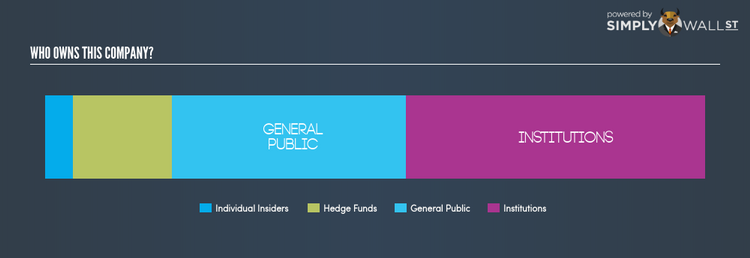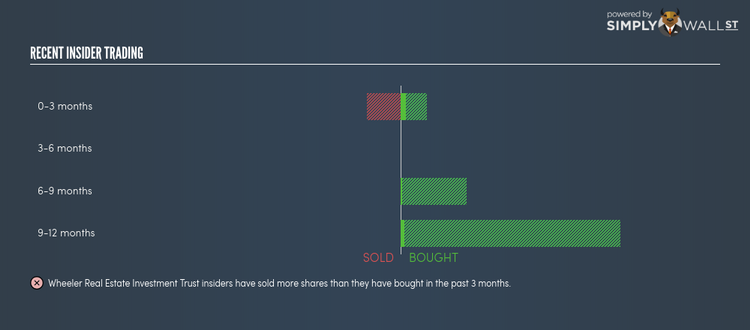Why Wheeler Real Estate Investment Trust Inc’s (NASDAQ:WHLR) Ownership Structure Is Important

In this analysis, my focus will be on developing a perspective on Wheeler Real Estate Investment Trust Inc’s (NASDAQ:WHLR) latest ownership structure, a less discussed, but important factor. Ownership structure has been found to have an impact on shareholder returns in both short- and long-term. Differences in ownership structure of companies can have a profound effect on how management’s incentives are aligned with shareholder returns, which is why we’ll take a moment to analyse WHLR’s shareholder registry.
See our latest analysis for Wheeler Real Estate Investment Trust
Institutional Ownership
With an institutional ownership of 42.22%, WHLR can face volatile stock price movements if institutions execute block trades on the open market, more so, when there are relatively small amounts of shares available on the market to trade Although WHLR has a high institutional ownership, such stock moves, in the short-term, are more commonly linked to a particular type of active institutional investors – hedge funds. Considering hedge funds hold a stake of 13.95% in the company, WHLR shares may experience high short-term volatility as this class of institutions are frequently found to sell significantly during market-wide shocks. But I also examine other ownership types and their potential impact on WHLR’s investment case.
Insider Ownership
Insiders form another group of important ownership types as they manage the company’s operations and decide the best use of capital. Insider ownership has been linked to better alignment between management and shareholders. WHLR insiders hold a not-so-significant 4.08% stake in the company, which somewhat aligns their interests with that of shareholders. However, a higher level of insider ownership has been linked to management executing on high-returning projects instead of expansion projects for the sake of apparent growth. I will also like to check what insiders have been doing recently with their holdings. Insider buying may be a sign of upbeat future expectations, however, selling doesn’t necessarily mean the opposite as insiders may be motivated by their personal financial needs.
General Public Ownership
A big stake of 33.17% in WHLR is held by the general public. This size of ownership gives retail investors collective power in deciding on major policy decisions such as executive compensation, appointment of directors and acquisitions of businesses. This level of ownership gives retail investors the power to sway key policy decisions such as board composition, executive compensation, and potential acquisitions. This is a positive sign for an investor who wants to be involved in key decision-making of the company.
Next Steps:
With significant institutional ownership, including active hedge, existing investors should seek a margin of safety when investing in WHLR. This will allow an investor to reduce the impact of non-fundamental factors, such as volatile block trading impact on their portfolio value. However, if you are building an investment case for WHLR, ownership structure alone should not dictate your decision to buy or sell the stock. Rather, you should be looking at fundamental drivers such as the intrinsic valuation, which is a key driver of Wheeler Real Estate Investment Trust’s share price. I urge you to complete your research by taking a look at the following:
Financial Health: Is WHLR’s operations financially sustainable? Balance sheets can be hard to analyze, which is why we’ve done it for you. Check out our financial health checks here.
Past Track Record: Has WHLR been consistently performing well irrespective of the ups and downs in the market? Go into more detail in the past performance analysis and take a look at the free visual representations of WHLR’s historicals for more clarity.
Other High-Performing Stocks: Are there other stocks that provide better prospects with proven track records? Explore our free list of these great stocks here.
NB: Figures in this article are calculated using data from the last twelve months, which refer to the 12-month period ending on the last date of the month the financial statement is dated. This may not be consistent with full year annual report figures.
To help readers see pass the short term volatility of the financial market, we aim to bring you a long-term focused research analysis purely driven by fundamental data. Note that our analysis does not factor in the latest price sensitive company announcements.
The author is an independent contributor and at the time of publication had no position in the stocks mentioned.


